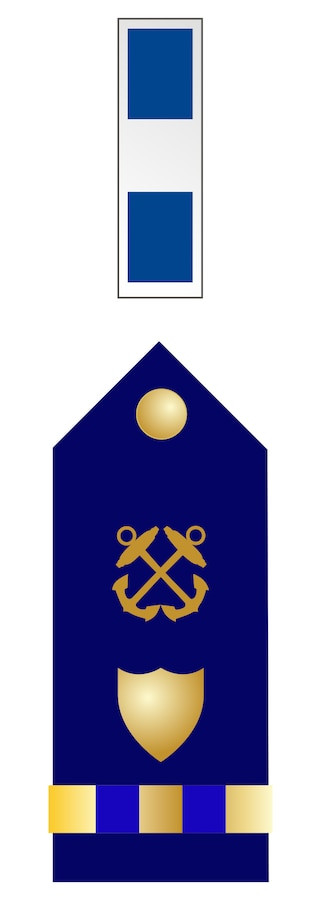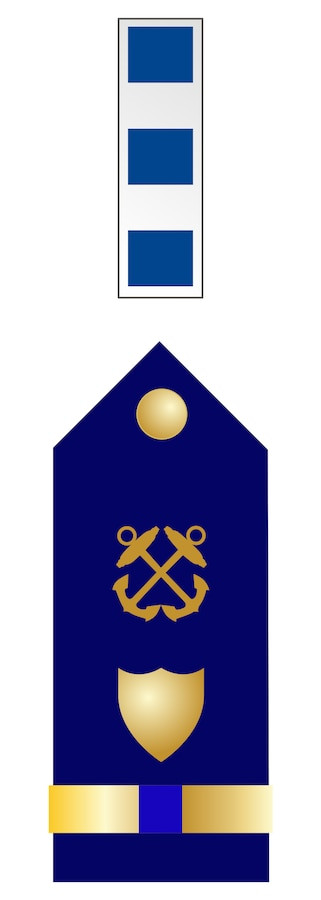Military rank in the United States Armed Forces signifies more than just hierarchy; it embodies leadership and growing responsibility for personnel, equipment, and mission success. Understanding these ranks is crucial for anyone interested in the military, whether for professional reasons or general knowledge. This guide will explore the rank insignia across different U.S. military branches and shed light on the significance of these symbols on military branch uniforms.
It’s important to differentiate between rank and paygrade. Paygrades, such as E-1, W-2, and O-5, are administrative classifications primarily used for standardizing compensation across the military services. The letter prefixes denote categories: “E” for enlisted, “W” for warrant officers, and “O” for commissioned officers, while the number indicates the pay level within that category. Interestingly, some paygrades encompass multiple ranks, each with distinct responsibilities. For example, in the Army, both corporals and specialists fall under paygrade E-4, yet corporals hold a higher rank and leadership role despite receiving equivalent pay. Similarly, in the Marine Corps, a master gunnery sergeant and a sergeant major are both E-9s, but the sergeant major is the senior rank.
Enlisted Rank Insignia: Identifying Roles and Responsibilities on Uniforms
Enlisted personnel constitute the backbone of the U.S. military. Their ranks, displayed prominently on their uniforms, denote experience, expertise, and leadership capabilities. Let’s examine the enlisted rank insignia across the Army, Marine Corps, Navy, Air Force, Space Force, and Coast Guard.
Enlisted Paygrades E-1 to E-4: Entry-Level and Early Career Uniforms
Service members in paygrades E-1 through E-3 are typically in initial training or on their first assignments. This phase includes basic training, where recruits adapt to military culture and learn fundamental skills. This is followed by specialized training focusing on a specific Military Occupational Specialty (MOS) in the Army and Marine Corps, a rate in the Navy, or an Air Force Specialty Code (AFSC) in the Air Force.
| Paygrade | Army | Marine Corps | Navy | Air Force | Space Force | Coast Guard |
|---|---|---|---|---|---|---|
| E-1 | Private | Private | Seaman Recruit (SR) | Airman Basic | Specialist 1 (Spc1) | Seaman Recruit (SR) |
| E-2 | Private (PV2) | Private First Class (PFC) | Seaman Apprentice (SA) | Airman (Amn) | Specialist 2 (Spc2) | Seaman Apprentice (SA) |
| E-3 | Private First Class (PFC) | Lance Corporal (LCpl) | Seaman (SN) | Airman First Class (A1C) | Specialist 3 (Spc3) | Seaman (SN) |
| E-4 | Corporal (CPL) Specialist (SPC) | Corporal (Cpl) | Petty Officer Third Class (PO3) | Senior Airman (SrA) | Specialist 4 (Spc4) | Petty Officer Third Class (PO3) |
Noncommissioned and Petty Officers: Mid-Level Leadership on Military Uniforms (E-5 to E-7)
Leadership responsibilities significantly increase in the mid-level enlisted ranks. This is formally recognized by the terms Noncommissioned Officer (NCO) and Petty Officer. An Army sergeant, Air Force staff sergeant, and Marine corporal are NCO ranks. The Navy equivalent, petty officer, begins at the rank of petty officer third class. These ranks signify increased technical proficiency and leadership roles, reflected in the insignia worn on their uniforms.
| Paygrade | Army | Marine Corps | Navy | Air Force | Space Force | Coast Guard |
|---|---|---|---|---|---|---|
| E-5 | Sergeant (SGT) | Sergeant (Sgt) | Petty Officer Second Class (PO2) | Staff Sergeant (SSgt) | Sergeant (Sgt) | Petty Officer Second Class (PO2) |
| E-6 | Staff Sergeant (SSG) | Staff Sergeant (SSgt) | Petty Officer First Class (PO1) | Technical Sergeant (TSgt) | Technical Sergeant (TSgt) | Petty Officer First Class (PO1) |
| E-7 | Sergeant First Class (SFC) | Gunnery Sergeant (GySgt) | Chief Petty Officer (CPO) | Master Sergeant (MSgt) First Sergeant | Master Sergeant (MSgt) | Chief Petty Officer (CPO) |
Senior Enlisted Ranks: Experienced Advisors and Leaders (E-8 and E-9)
At the E-8 and E-9 levels, senior enlisted personnel serve as experienced advisors to commanders and represent the enlisted force at the highest levels. Within the Army, Marine Corps, and Air Force, there are often two positions at the E-8 and E-9 paygrades, reflecting different responsibilities within the same pay level. These senior leaders, with 15 to 30 years of service, play a critical role in the military’s operational effectiveness and personnel management.
| Paygrade | Army | Marine Corps | Navy | Air Force | Space Force | Coast Guard |
|---|---|---|---|---|---|---|
| E-8 | Master Sergeant (MSG) First Sergeant (1SG) | Master Sergeant (MSgt) First Sergeant | Senior Chief Petty Officer (SCPO) | Senior Master Sergeant (SMSgt) First Sergeant | Senior Master Sergeant (SMSgt) | Senior Chief Petty Officer (SCPO) |
| E-9 | Sergeant Major (SGM) Command Sergeant Major (CSM) | Master Gunnery Sergeant (MGySgt) Sergeant Major (SgtMaj) | Master Chief Petty Officer (MCPO) Fleet/Command Master Chief Petty Officer | Chief Master Sergeant (CMSgt) First Sergeant Command Chief Master Sergeant | Chief Master Sergeant (CMSgt) | Master Chief Petty Officer (MCPO) Fleet/Command Master Chief Petty Officer |
| E-9 (Senior Enlisted Leaders) |
Sergeant Major of the Army (SMA) | Sergeant Major of the Marine Corps (SgtMajMC) | Master Chief Petty Officer of the Navy (MCPON) | Chief Master Sergeant of the Air Force (CMSAF) | Chief Master Sergeant of the Space Force (CMSSF) | Master Chief Petty Officer of the Coast Guard (MCPOCG) |
Note on Enlisted Ranks:
- Army: Specialist ranks below corporal in precedence within the Army, but paygrade determines precedence across services.
- Navy/Coast Guard: Specialty marks on rating badges indicate the wearer’s rating. Gold stripes denote 12+ years of good conduct. Specific distinctions exist for Master Chief Petty Officers of the Navy, Fleet, and Command Master Chief Petty Officers.
- Coast Guard: Part of the Department of Homeland Security in peacetime and the Navy in wartime. Rank insignia mirrors the Navy, except for color and the seaman recruit rank stripe.
Officer Rank Insignia: Authority and Command in Uniform
Officer ranks represent the highest levels of leadership in the U.S. military. Commissioned officers hold presidential commissions, confirmed by the Senate. Their rank insignia, displayed on their uniforms, signify their command authority and strategic responsibilities. Officer ranks are broadly categorized: company grade (O-1 to O-3), field grade (O-4 to O-6), and general officers (O-7 and higher) in the Army, Air Force, and Marine Corps. The Navy uses junior grade, mid-grade, and flag officer groupings respectively. Warrant officers are specialists in specific fields, ranking between enlisted and commissioned officers.
Warrant Officer Ranks: Specialized Expertise
Warrant officers are technical experts within their military branches. While Air Force and Space Force do not utilize warrant officers, the other branches recognize their specialized skills and expertise with unique rank insignia.
| Paygrade | Army | Marine Corps | Navy | Air Force | Space Force | Coast Guard |
|---|---|---|---|---|---|---|
| W-1 | Warrant Officer 1 WO1 | Warrant Officer 1 WO | USN Warrant Officer 1 WO1 | N/A | N/A | N/A |
| W-2 | Chief Warrant Officer 2 CW2 | Chief Warrant Officer 2 CWO2 | USN Chief Warrant Officer 2 CWO2 | N/A | N/A | Chief Warrant Officer 2 CWO2  W-2 Chief Warrant Officer 2 W-2 Chief Warrant Officer 2 |
| W-3 | Chief Warrant Officer 3 CW3 | Chief Warrant Officer 3 CWO3 | USN Chief Warrant Officer 3 CWO3 | N/A | N/A | Chief Warrant Officer 3 CWO3  W-3 Chief Warrant Officer 3 W-3 Chief Warrant Officer 3 |
| W-4 | Chief Warrant Officer 4 CW4 | Chief Warrant Officer 4 CWO4 | USN Chief Warrant Officer 4 CWO4 | N/A | N/A | Chief Warrant Officer 4 CWO4  W-4 Chief Warrant Officer 4 W-4 Chief Warrant Officer 4 |
| W-5 | Chief Warrant Officer 5 CW5 | Chief Warrant Officer 5 CWO5 | USN Chief Warrant Officer 5 CWO5 | N/A | N/A | N/A |
Commissioned Officer Ranks: Command Authority and Strategic Leadership on Uniforms (O-1 to O-10)
Commissioned officers are the leadership core of the U.S. military. Their ranks range from Second Lieutenant/Ensign (O-1) to General/Admiral (O-10), each carrying increasing levels of responsibility and command. Naval officers have unique rank insignia depending on their uniform: collar insignia pins for khakis, stripes on shoulder boards for whites, and stripes on lower coat sleeves for blues.
| Paygrade | Army | Marine Corps | Navy | Air Force | Space Force | Coast Guard |
|---|---|---|---|---|---|---|
| O-1 | Second Lieutenant 2LT | Second Lieutenant 2ndLt | Ensign ENS | Second Lieutenant 2d Lt | Second Lieutenant 2d Lt | Ensign ENS |
| O-2 | First Lieutenant 1LT | First Lieutenant 1stLt | Lieutenant Junior Grade LTJG | First Lieutenant 1st Lt | First Lieutenant 1st Lt | Lieutenant Junior Grade LTJG |
| O-3 | Captain CPT | Captain Capt | Lieutenant LT | Captain Capt | Captain Capt | Lieutenant LT |
| O-4 | Major MAJ | Major Maj | Lieutenant Commander LCDR | Major Maj | Major Maj | Lieutenant Commander LCDR |
| O-5 | Lieutenant Colonel LTC | Lieutenant Colonel LtCol | Commander CDR | Lieutenant Colonel Lt Col | Lieutenant Colonel Lt Col | Commander CDR |
| O-6 | Colonel COL | Colonel Col | Captain CAPT | Colonel Col | Colonel Col | Captain CAPT |
| O-7 | Brigadier General BG | Brigadier General BGen | Rear Admiral Lower Half RDML | Brigadier General Brig Gen | Brigadier General Brig Gen | Rear Admiral Lower Half RDML |
| O-8 | Major General MG | Major General MajGen | Rear Admiral Upper Half RADM | Major General Maj Gen | Major General Maj Gen | Rear Admiral Upper Half RADM |
| O-9 | Lieutenant General LTG | Lieutenant General LtGen | Vice Admiral VADM | Lieutenant General Lt Gen | Lieutenant General Lt Gen | Vice Admiral VADM |
| O-10 | General GEN | General Gen | Admiral ADM | General Gen | General Gen | Admiral ADM |
| O-11 (Wartime Rank) |
General of the Army | N/A | Fleet Admiral | General of the Air Force |
Note on Officer Ranks:
- Naval Officer Uniforms: Navy officers utilize different rank insignia depending on the uniform type (khakis, whites, blues).
- Wartime Ranks: General of the Army, Fleet Admiral, and General of the Air Force are reserved for wartime.
Understanding U.S. military rank insignia is key to recognizing the structure and leadership within each branch. These symbols, prominently displayed on Us Military Branch Uniforms, represent years of dedication, training, and commitment to service. Whether you are looking to join the military, study military history, or simply understand the visual language of rank, this guide serves as a comprehensive overview of the insignia that define the men and women of the U.S. Armed Forces.
